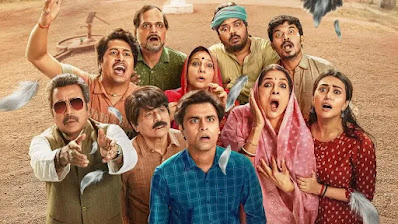REVISITING CLASSICS - 5
This week we delve into Fellini's classic La Dolce Vita. Lo Dolce Vita is not your routine film but an episodic one where each of the incidents happen in silos bounded by three main characters of Mastroianni as the Journalist (Marcello Rubini), his live in partner (Emma) played by Yvonne Furneaux and his intermittent relationship with Maddelena, the character played by Anouk Aimee. And capturing all of these episodic features is the guy we know as Paparazzo from whom the name Paparazzi is what we know "them" as famously today.
The 7 episodes over 7 days in the life of the journalist Marcello captures him while at work and at his personal moments. Often the line separating the personal and professional parts gets so intertwined that one is unable to distinguish. Take for instance the episode which seems to be the least connected with the central plot on the magical power of the tree and the two kids and their chance viewing of Madonna. And our protagonist, Marcello is working here to cover the event or perhaps the disenchantment of the society. He is accompanied by his live in partner Emma. There are moments where Marcello and Emma are in a conversation and it is clear that there is a sense of aloofness to his demeanor. He is uninterested in the proceedings which looks like a farce yet he is there for the "Job" part of it much like Emma is with him because the relationship demands. At the end of the 7th episode where the girl from 3rd Episode (Intermezzo) reappears at the sea-side and they have an animated conversation and gradually the film ends here; you now seem to be connected to each one of the days and nights to each other. As an audience you are suddenly left to realize that each episode had a connect to each other through those sets of events that have happened.
But why is La Dolce Vita such a classic. The backdrop for one is the post war Italy and Rome is the antagonist to the proceedings. The ritz, glamour and the seedy part of the city is in full flow. And the city is unforgiving. The impoverished to the ultra rich are all consumed by the inordinate of the city. Fellini's brilliance in making the city the villain of the proceedings is an absolute masterclass. The first episode is a marvel that brings out the dichotomy of the city so well. It is a masterclass moment where a commercial sex worker comes to her house where water has virtually submerging the house and she uses wooden planks to go from one room to another. She is accompanied by a spoilt rich girl Maddeline and the journalist, Marcello.
Infact, most of the sequences showcases Rome perennially in a construction mode with housing societies being built around the city and it gives a sense of work in progress. The other thing about La Dolce Vita is the vice and the seedy part of the city which is not the New York or London of the pre war days but it looks like a genre unto itself. It is dark, often disturbing but never edgy and has a grace to itself. And the Paparazzi's add to the glamour. In episode 2 when Sylvia comes to town; the city and the glamour is in full resplendent and they never bat an eyelid to shame and fame her at different times. Sometimes, the melancholy of it all wears too heavily on the city and the people and the episode featuring Marcello and his moments with his visiting father is best captured there.
La Dolce Vita is a classic 60's Rome and an amazing set design which all adds to the mystic and the aura of the time. It is a beautiful film to say the least and at times it is a melancholy laden one, where the characters and their loneliness, insecurities or the nothingness looks so sullen and disdain.
It streams on the Mubi platform. Go watch.




Comments